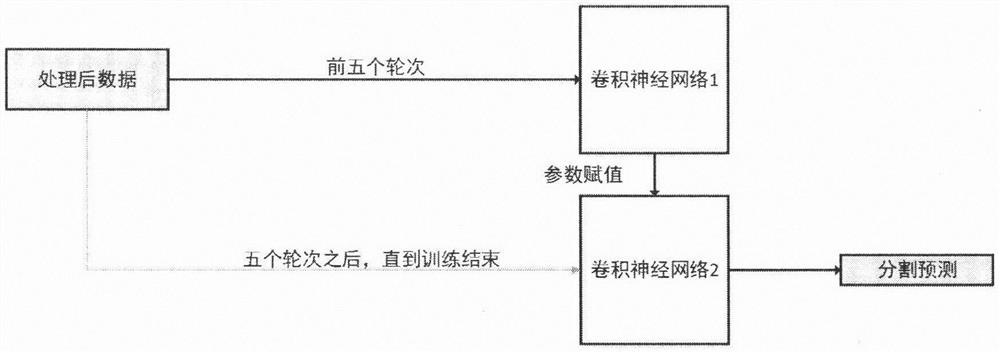Multi-modal nuclear magnetic image cerebral arterial thrombosis lesion segmentation method based on convolutional neural network
A convolutional neural network, ischemic stroke technology, applied in biological neural network models, neural learning methods, neural architectures, etc., can solve problems such as small parameter amount, deepening network gradient disappearance or redundant calculation, and achieve convergence The effect of stability, improving segmentation accuracy and generalization ability, and reducing the time required for labeling
- Summary
- Abstract
- Description
- Claims
- Application Information
AI Technical Summary
Problems solved by technology
Method used
Image
Examples
Embodiment Construction
[0033] The method of the present invention will be described in detail with reference to the drawings and embodiments.
[0034] The schematic diagram of the segmentation method of ischemic stroke lesion based on multimodality is as follows: figure 2 shown. The overall flow of the method is as follows:
[0035] 1) Based on the original architecture of the standard U-Net network, replace the 2D convolutional layer with a 3D convolutional layer, and design a deep convolutional neural network 1, such as Figure 4 shown.
[0036] 2) Design the basic module, cascade the 3×3×3 convolutional layer and the batch normalization layer, and use Leaky ReLU to activate, such as image 3 shown.
[0037] 3) Design a 3D deformable convolution module, use a 3×3×3 convolution layer, and the output channel is three times that of the input channel, representing the 3D offset coordinates of each pixel. For each pixel, combine the offset coordinates with the original coordinates to calculate Ne...
PUM
 Login to View More
Login to View More Abstract
Description
Claims
Application Information
 Login to View More
Login to View More - R&D
- Intellectual Property
- Life Sciences
- Materials
- Tech Scout
- Unparalleled Data Quality
- Higher Quality Content
- 60% Fewer Hallucinations
Browse by: Latest US Patents, China's latest patents, Technical Efficacy Thesaurus, Application Domain, Technology Topic, Popular Technical Reports.
© 2025 PatSnap. All rights reserved.Legal|Privacy policy|Modern Slavery Act Transparency Statement|Sitemap|About US| Contact US: help@patsnap.com



